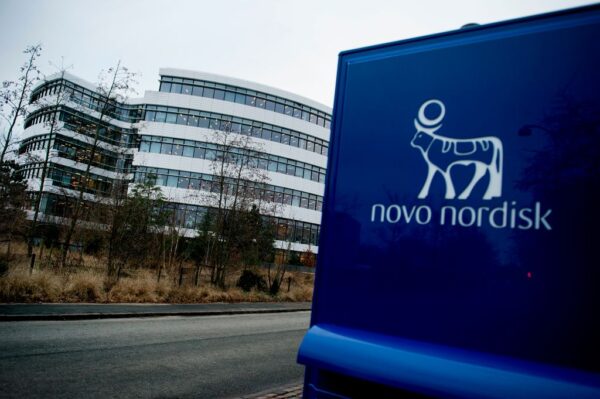
If you’re working at a biotech company in the therapeutic areas of diabetes or obesity, John McDonald might want to talk with you. McDonald is global head of business development and M&A at Novo Nordisk, a company that was one of the top dealmakers in 2023, striking 14 transactions totaling $9.5 billion in disclosed deal value.
Novo Nordisk’s dealmaking activity is continuing. Earlier this year, the company struck a multi-billion acquisition agreement to secure manufacturing capacity to support the production of its GLP-1 drugs for metabolic disorders. Strong demand for those drugs is straining the company’s manufacturing capacity.
The demand for GLP-1 drugs translates into soaring revenue. Novo Nordisk’s GLP-1 drug franchise alone accounted for 34.9 billion Danish krone (about $5 billion) in sales in the first quarter of this year, a more than 30% increase compared to the same period in 2022. The market demand shows no sign of ebbing, and Novo Nordisk is putting its cash haul to work, striking deals to expand the company’s drug portfolio and pipeline. In a fireside chat Tuesday during the annual BIO conference in San Diego, McDonald shared his thoughts about Novo Nordisk’s business development strategy.

Reducing Clinical and Staff Burnout with AI Automation
As technology advances, AI-powered tools will increasingly reduce the administrative burdens on healthcare providers.
Competition is fierce — for good assets. Such assets fetch high prices with large upfront sums, McDonald said. But Novo Nordisk offers stability that many other companies cannot. It’s owned by the Novo Nordisk Foundation, which is not going to sell itself to anyone else and is likewise not going to sell its controlling stake in Novo Nordisk, McDonald said. Within Novo Nordisk itself, the drugmaker has people who have been there a long time. At some big pharma companies, turnover means that the person who liked your company or assets might not be there after three years.
Novo Nordisk’s motivation for dealmaking is the reality that the day will come when semaglutide, the active pharmaceutical ingredient in its GLP-1 drugs, will lose patent protection, McDonald said. The company needs to find drugs to replace that revenue. Novo Nordisk CEO Lars Fruergaard Jørgensen wants to find early drug candidates where the pharmaceutical giant can do something to make the asset stronger. Consequently, the assets add value to Novo Nordisk. But rather than focusing on companies by the stage of their assets, McDonald said Novo Nordisk’s approach is to look at the landscape and see what’s a match to its interests.
McDonald said Novo Nordisk takes a tiered approach to prioritizing its business development work. The top therapeutic tier is diabetes and obesity. Next is cardiovascular disease. The market appetite for assets in these tiers is high, and Novo Nordisk is willing to pay more to get those molecules, he said. Below cardiovascular, the next tier is kidney assets, such as drugs for metabolic dysfunction-associated steatohepatitis (MASH) and chronic kidney disease. Within these tiers of therapeutic focus, Novo Nordisk is open to many different types of drugs.
“We know to compete in the world, we need different types of modalities, so we’re modality agnostic,” McDonald said.

Heard at HLTH 2024: Insights from Innovative Healthcare Executives
Executives from Imagine360, Verily, BrightInsight, Lantern, and Rhapsody shared their approaches to reducing healthcare costs and facilitating digital transformation.
Areas that are not on a prioritization tier include gene editing and gene therapy, though the company has made some moves. Novo Nordisk will also look at deals in rare blood disorders, such as sickle cell disease and hemophilias. The rare blood focus has expanded to rare disease. One area that Novo Nordisk has no interest in at all is oncology. But in the areas of focus for Novo Nordisk, McDonald said he prefers partnering with a company versus acquiring it. Many acquisitions lead to brain drain as employees of the acquired company leave after the deal closes.
“In a partnering situation, a company makes money by working with you, so the talent will stay,” he explained.
Before Novo Nordisk acquired Dicerna Pharma, that company was a partner in the R&D of drugs for metabolic disorders. The relationship began in 2019, with Novo Nordisk committing $225 million in what McDonald characterized as his company’s largest platform deal. Dicerna’s technology platform develops RNA interference drugs. In 2021, the pharma giant struck a $3.3 billion deal to acquire Dicerna, adding the company’s platform and its drug pipeline.
In partnering, some companies that want to work with Novo Nordisk want the relationship to be exclusive. McDonald won’t do that. A Phase 1 asset has a 10% chance of success. To improve the odds, it makes more sense for Novo Nordisk to work with more than one partner. If Novo Nordisk is interested in a particular area, the company needs to place multiple bets, he explained.
Novo Nordisk will partner with early-stage companies, if appropriate, McDonald said. In other cases, the partnership may happen at a later stage. Regardless, there’s much innovation in the biopharmaceutical world today. In Novo Nordisk’s top priority tier of diabetes and obesity, the company goes through everything in those areas throughout the world to make sure the company has not missed anything.
McDonald said he’s also pleased with the cardiovascular pipeline the company has built. The latest acquisition was the March buyout of Cardior Pharmaceuticals. Cardior has drugs in Phase 1 and Phase 2 development for treating genetic diseases affecting the heart. The deal’s total value topped $1 billion.
Photo: Liselotte Sabroe/Scanpix Denmark/AFP, via Getty Images








